Try this Thai Spaghetti Pad Kee Mao for a tasty fusion of Thai and Italian flavors! It's the perfect combination of Thai drunken noodles and spaghetti, creating a delicious and easy meal that blends the best of both worlds. Ready in 20 minutes!

For more stir-fries dishes that you'll love. Check out my authentic and easy drunken noodles recipe, Guay Tuey Kua Gai, a wide Thai noodle dish stir fry, Pad see ew with chewy rice noodles, authentic shrimp Pad Thai, and Pad Mee Korat.
For fusion Asian recipes, you'll love our Thai basil pesto and Thai basil pesto pasta with sauteed shrimp.
Learn more about the fresh and dry rice noodles used in Thai cuisine here.
Jump to:
- What is Spaghetti Kee Mao
- What is the Original Pad Kee Mao Recipe?
- Why You’ll Love This Pad Kee Mao Recipe
- Ingredients for Spaghetti Pad Kee Mao
- A Word on Thai Holy Basil
- Added Vegetable Options
- How to Make Spaghetti Pad Kee Mao
- How to Serve
- Tips and Tricks for the Perfect Dish
- Variations & Substitutes
- Storage
- More Thai Recipes to Try Now
- Frequently Asked Questions
- Thai Spaghetti Pad Kee Mao
- Related
During my visits to Thailand over the years, I keep seeing Spaghetti Kee Mao in Thai restaurants. I kept putting off trying it, thinking I should stick to traditional Thai dishes.
But when my nieces ordered it one day, I was pleasantly surprised!
Now, I've perfected the recipe, and it's a hit with my Thai American family on pasta nights at home!
What is Spaghetti Kee Mao
Spaghetti Pad Kee Mao is a delightful fusion dish that marries the bold flavors of Thai drunken noodles with the familiar comfort of Italian pasta in a Thai stir-fry sauce creating a mixed dish that is addictive.
It's a delicious twist on traditional recipes that will delight your taste buds with every bite.
What is the Original Pad Kee Mao Recipe?
Pad Kee Mao? is a mouthwatering dish from Thailand that consists of spicy noodles stir-fried with a delicious sauce, with Thai chilies and spicy holy basil.
The literal translation of Pad Kee Mao in Thai means "Stir fry Drunkards" in English) and (the noodles are only implied). The origin of the name behind the dish is that it's a spicy Thai noodle, perfect after-party or hangover food for drunk people to enjoy with a cold beer to help cure a hangover.
Imagine the bustling streets of Thailand as you savor this flavorful and satisfying Thai dish. Don't miss out on this tasty treat next time you're ready for delicious Thai cuisine!
Why You’ll Love This Pad Kee Mao Recipe
- This particular recipe is Easy to make and bursting with flavor.
- Offers a delightful blend of Thai and Italian cuisines.
- Perfect for busy nights when you want a satisfying meal without the fuss.
- It's a flexible recipe! You can use any protein or added veggies for this dish.
Ingredients for Spaghetti Pad Kee Mao
See the recipe card below for the exact measurements.
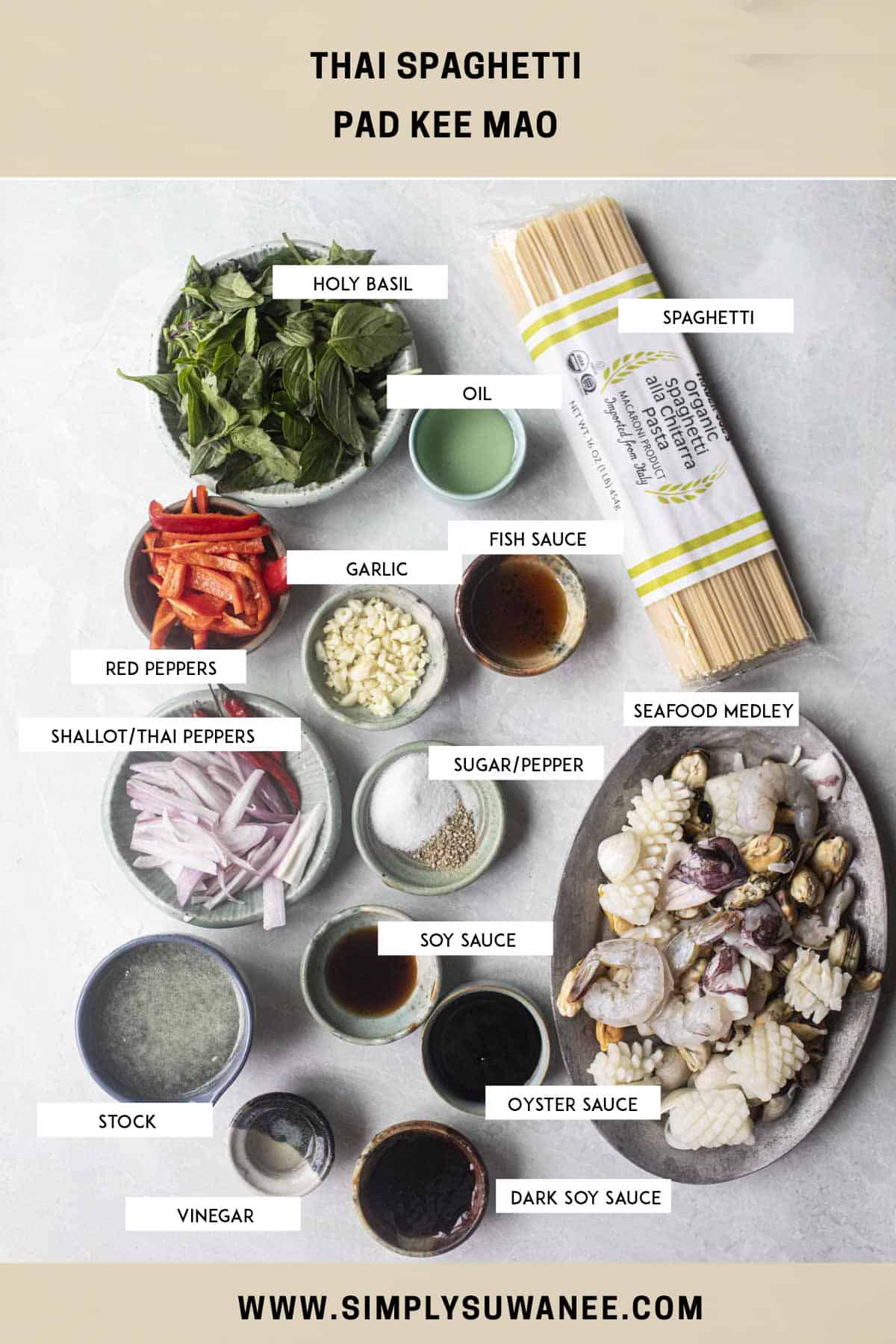
The Noodles
- 8 ounces spaghetti noodles. Choose any pasta noodles of choice.
- Make fresh noodles using this homemade pasta here.
- 1 pound shrimp or seafood medley. You can adapt and use any protein of choice.
The sauce ingredients
- Oil. Use neutral oils like avocado, vegetable, or canola oil.
- Fresh garlic for sauteeing with shallot for added flavor.
- Shallot. Red onions will work as a substitute for this recipe.
- Sugar. Use white, brown sugar, or palm sugar.
- Light soy sauce. As always, I used my Thai brand, light soy sauce, for my recipes on this blog. Any brand of soy sauce is fine for this fusion recipe.
- Fish sauce. Use a lighter brand of soy sauce, like 3 Crab or Red Boat.
- Sweet dark soy sauce. It adds a dark, caramelized color and flavors to the dish.
- Oyster sauce. Oyster sauce is the mother of all umami sauces! Read more about different Thai sauces here.
- Ground white pepper. It adds a unique spicy and earthy flavor to the dish.
- Stock. Use light or no salt stock.
A Word on Thai Holy Basil
Holy basil or Tulsi is a basil variety with a unique flavor and a peppery and minty taste. It's not the same as the Thai sweet basil with the purple stems. Holy basil has light green leaves with fuzzy stems.
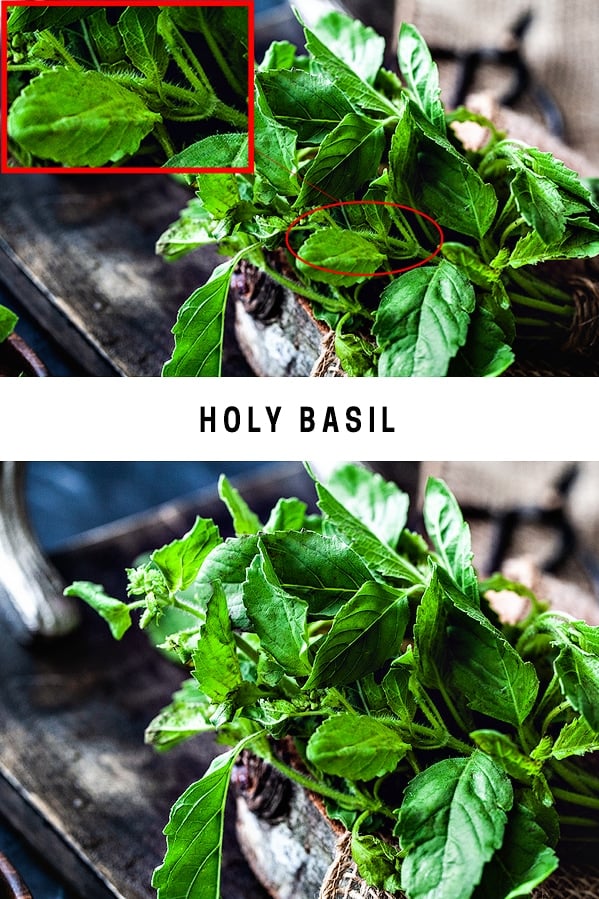
They are called Kra Pao in Thai and are used often in Thai cooking in famous dishes like Thai Basil Chicken Gai Pad Kra Pao, Thai Basil Pork Stir Fry (Moo Pad Kra Pao), Thai basil fried rice, and Pad Kra Pao Moo krob.
Find these basil at the Asian grocery stores. Learn more about the different types of Thai basil and other fresh Thai herbs here.
Added Vegetable Options
These are the vegetable options to add to your spaghetti Pad Kee Mao. Use baby corn, bok choy, Chinese broccoli, snow peas, broccolini, onions purple, sweet, or yellow, water chestnuts, bamboo shoots, and sliced carrots.
Cut them into bite-size pieces for your stir-frying.
How to Make Spaghetti Pad Kee Mao
1. Cook your spaghetti until it's al dente - firm and not fully cooked. Follow the package instructions but cook it for 2-3 minutes less than suggested.

2. Prepare the sauce, stir until sugar dissolves, and set aside.
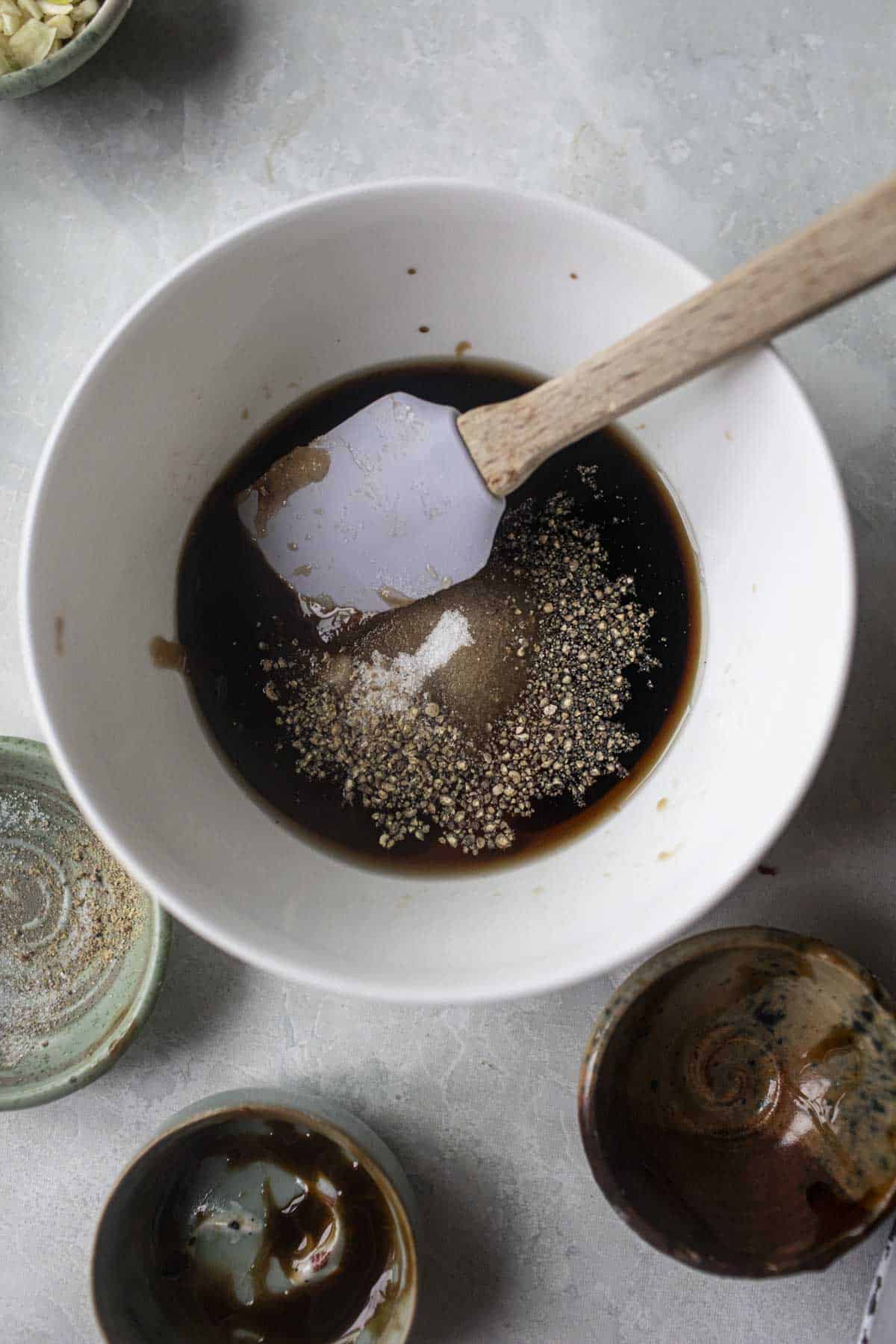
3. On medium-high heat, sauté garlic and Thai peppers in oil until fragrant-15 seconds. Then, add the shallot and red peppers until lightly translucent, 1-2 minutes. (Add more veggies if desired!)


4. Turn the temperature to medium heat. Add seafood and cook until just done, 2-3 minutes.
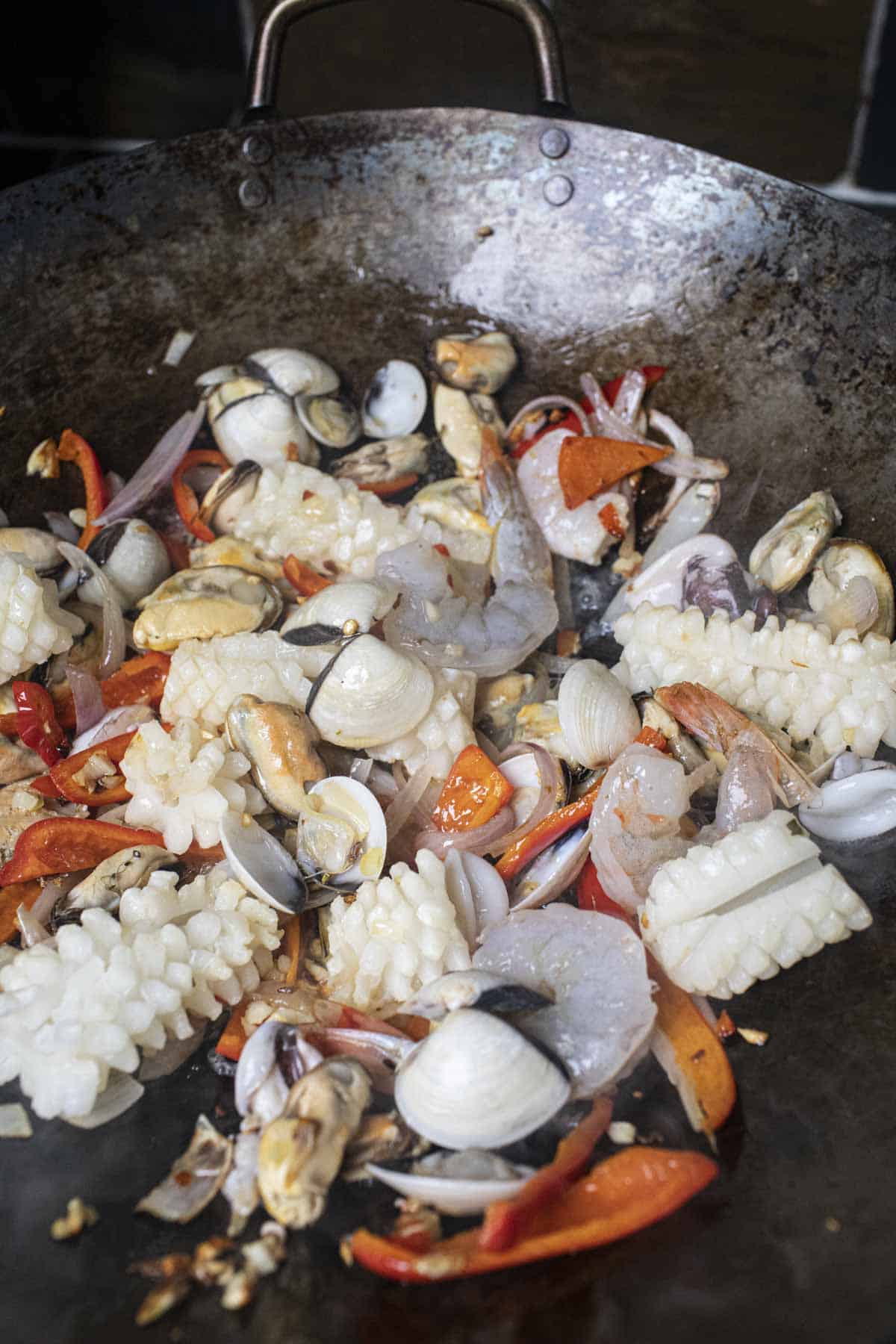
5. Add cooked spaghetti and toss until coated. Add in the sauce and mix well. Cook for 1-2 minutes. Then, add the stock to loosen up the pan a bit.
Taste and adjust flavors with more fish sauce, lime juice, and soy sauce. Add more Thai chili peppers as needed as well.

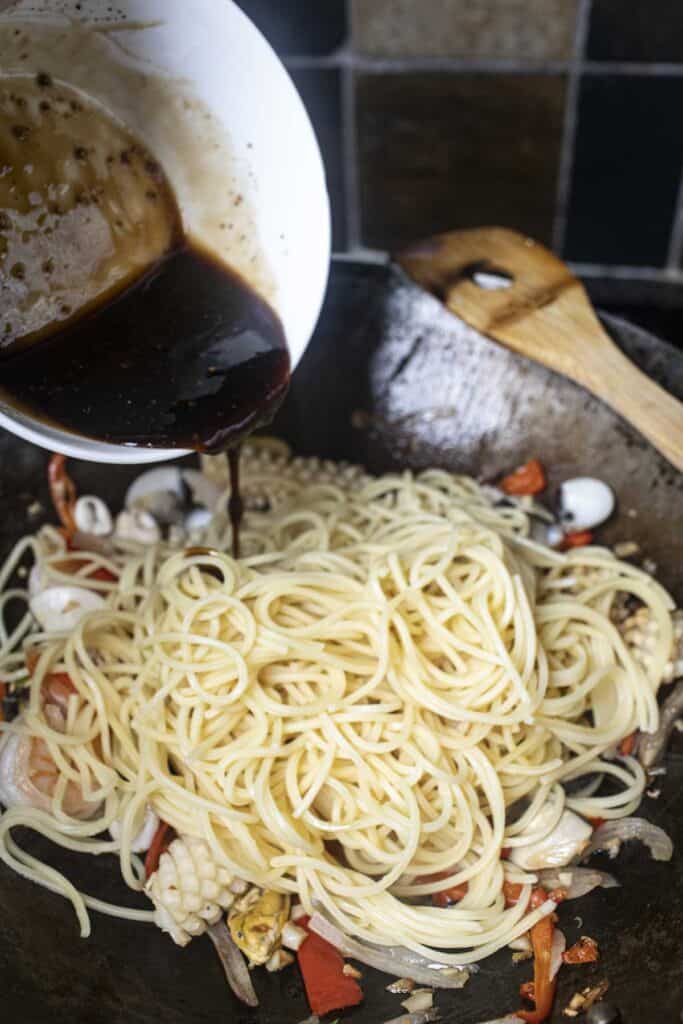
6. Add the holy basil, turn the heat off, and toss until the leaves wilt. Done. Serve immediately!

How to Serve
- Serve immediately, garnished with fresh basil leaves, sliced green onion or red pepper, and lime wedges.
- Add fresh chili flakes, Thai chili garlic oil, Thai sriracha sauce, and Nam Prik Som or Nam Prik Pao for spicy food lovers.
Tips and Tricks for the Perfect Dish
- Thai holy basil can be difficult to find. Check your local Asian market or Thai grocery stores and ask for help if necessary.
- Don't overcook the seafood to ensure it remains tender.
- If using other proteins like chicken, pork, or beef, they will need to be cooked a bit longer than the seafood. Cook them for about 4-5 minutes.
- Though the original Thai pad kee mao is a spicy Thai noodle dish, feel free to adjust the spice level according to your preference for this recipe.
Variations & Substitutes
- For a vegetarian version, use extra firm tofu for a different protein option. Try my friend's vegan fish sauce recipe here.
- Use different vegetables based on personal preference.
Storage
- Store leftovers in an airtight container in the refrigerator for up to 2 days.
More Thai Recipes to Try Now
- Beef Pad Thai without tamarind sauce.
- Pad Mee Thai rice noodles stir fry.
- Sen Yai fresh rice noodles
- Mussels stir fry with fresh Thai basil.
Frequently Asked Questions
While both dishes feature similar ingredients, they have different preparations and flavors.
Kee Mao translates to "drunkard" in Thai, referencing the dish's spicy flavor.
It depends on the ingredients used and portion size, but they can be part of a balanced diet.
You can, but the flavors will be completely different, and the name won't be Krapao anymore since that is the Name of the holy basil in Thai.
Drunken noodles are a Thai dish with a spicy flavor, while lo mein is a Chinese dish featuring soft noodles with various ingredients.
**Love a recipe you've tried? Please leave a 5-star rating in the recipe card below and a review in the comments section further down the page. Or follow me on Facebook, Pinterest, or Instagram!**
Print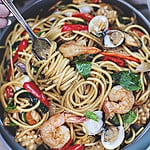
Thai Spaghetti Pad Kee Mao
- Total Time: 20 minutes
- Yield: 4-5 servings 1x
- Diet: Low Lactose
Description
Try this Thai Spaghetti Pad Kee Mao for a tasty fusion of Thai and Italian flavors! It's the perfect combination of Thai drunken noodles and spaghetti, creating a delicious and easy meal that blends the best of both worlds. Ready in 20 minutes!
Ingredients
The Protein and Pasta
- 8 ounces spaghetti noodles. Angel hair, Linguini, Fettuccine, egg noodles, or Lo Mein noodles will work.
- 1 pound Shrimp or seafood medley
The Sauce
- 2 tablespoons oil
- 2 tablespoons garlic, minced
- 2 ounces shallot (½ cup) sliced long and thin
- 1 tablespoon sugar
- 1 tablespoon soy sauce
- 1 tablespoon fish sauce
- 1 tablespoon sweet soy sauce
- 1 tablespoon soy sauce
- 2 tablespoons oyster sauce
- ½ teaspoon white pepper
- ⅓ cup stock or water. Add more as needed
The Veggies and Basil
- 1 cup red bell pepper or mixed color sweet bell peppers. Use serrano or Thai peppers for added heat.
- 1 ½ cup holy basil (Tulsi). Use the leafy and tender ends.
- 1-5 Thai red chilis, chopped small, and use as needed for spice preference.
Instructions
1. Cook your spaghetti until it's al dente - firm and not fully cooked. Follow the package instructions, but cook it for 2-3 minutes less than suggested.
2. Prepare the sauce, stir until sugar dissolves, and set aside.
3. On medium-high heat, sauté garlic and Thai peppers in oil until fragrant-15 seconds. Then, add the shallot and red peppers until lightly translucent, 1-2 minutes. (Add more veggies if desired!)
4. Turn the temperature to medium heat. Add seafood and cook until just done, 2-3 minutes.
5. Add cooked spaghetti and toss until coated. Add in the sauce and mix well. Cook for 1-2 minutes. Then, add the stock to loosen up the pan a bit. Taste and adjust flavors with more fish sauce, lime juice, and soy sauce. Add more Thai chili peppers as needed as well.
6. Add the holy basil, turn the heat off, and toss until the leaves wilt. Done. Serve immediately!
Notes
- Thai holy basil can be difficult to find. Check your local Asian market or Thai grocery stores and ask for help if necessary.
- Don't overcook the seafood to ensure it remains tender.
- If using other proteins like chicken, pork, or beef, they will need to be cooked a bit longer than the seafood. Cook them for about 4-5 minutes.
- Though the original Thai pad kee mao is a spicy Thai noodle dish, feel free to adjust the spice level according to your preference for this recipe.
- Prep Time: 10
- Cook Time: 10
- Category: Noodles
- Method: stir fry
- Cuisine: Thai
** Thank you so much for visiting my blog! This is truly a passion for me. If you have enjoyed these recipes and appreciate the hard work I put into them, I would love it if you would share them with your friends! Your recommendation is the highest review I could hope for, and I’d appreciate it! **
Related
Looking for other recipes like this? Try these delicious Thai recipes.

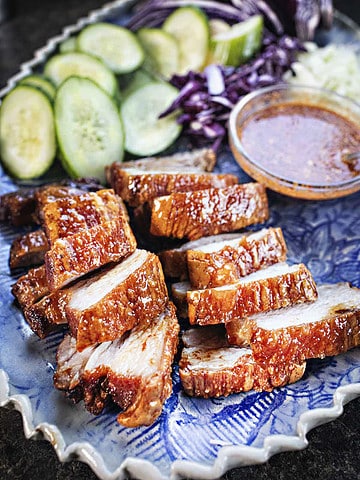
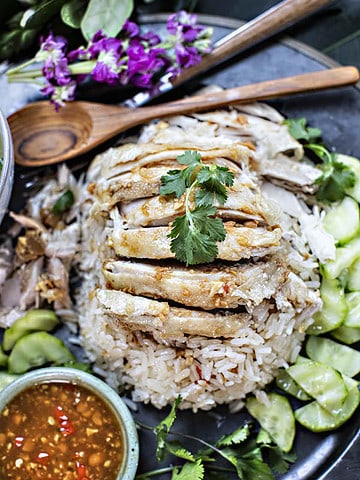

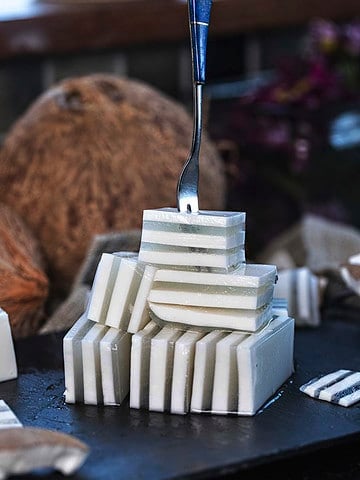
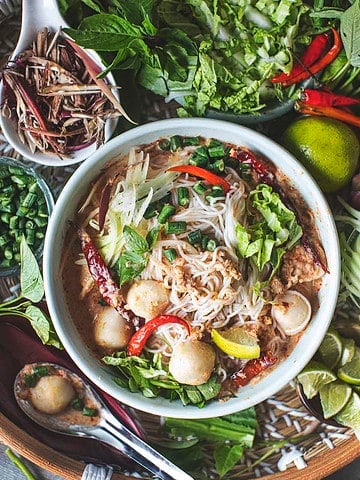



Leave a Reply